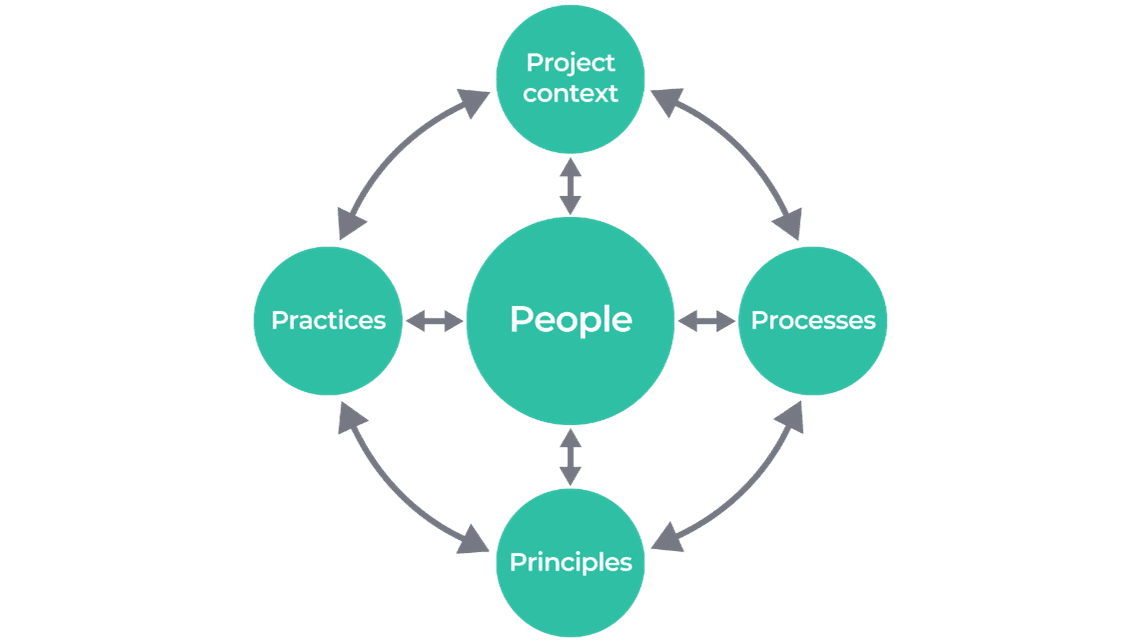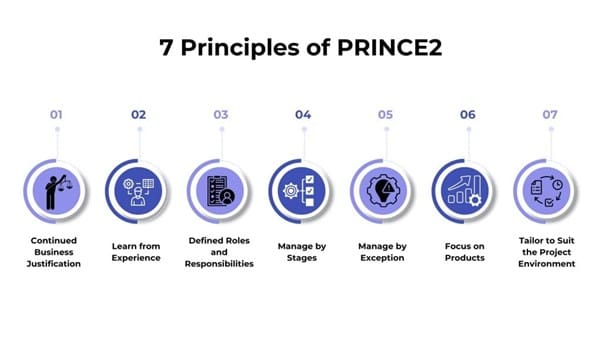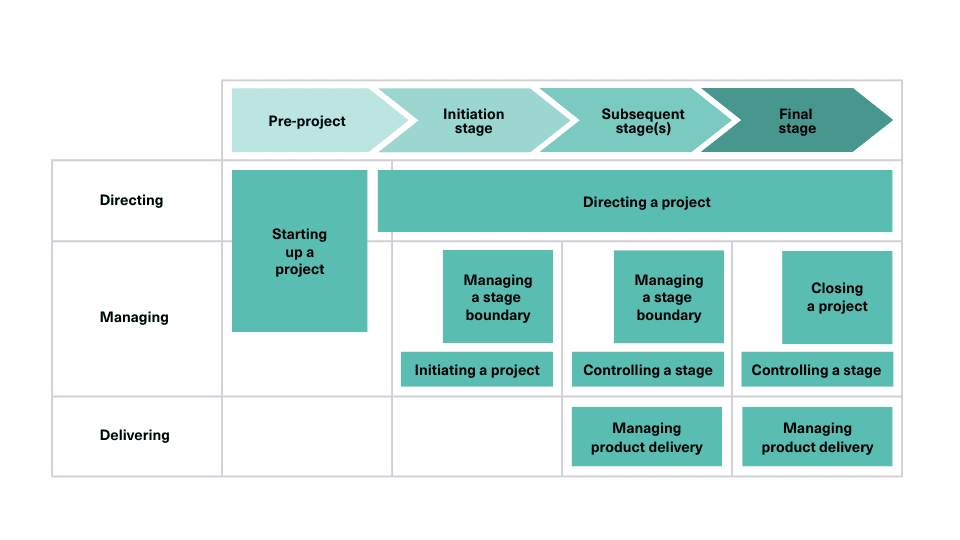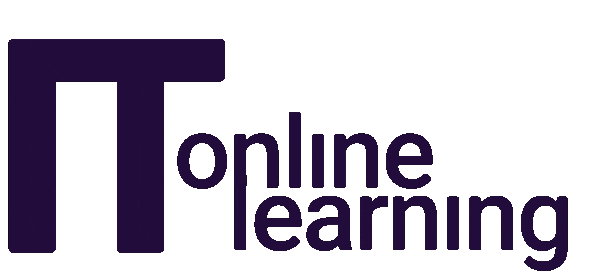PRINCE2®– sounds fancy, doesn’t it? But don’t worry; it’s not as complicated as it might seem. PRINCE2® is just a method – and a helpful one at that – for organising and managing projects of any kind, no matter how big or small.
PRINCE2® stands for Projects in Controlled Environments, but all you need to know is that it’s a way you can manage projects in an organised, step-by-step way. It breaks the project down into manageable chunks, so you can handle one piece at a time without feeling overwhelmed.
Originally developed by the UK government in 1989, PRINCE® (Projects IN Controlled Environments) has since evolved into PRINCE2®, a globally recognized standard for project management. Initially created to manage IT projects, PRINCE was refined in 1996 when over 150 European organizations collaborated to establish a more comprehensive framework. This evolution led to the birth of PRINCE2, designed to be applicable to any project, regardless of size or industry, offering a systematic approach to delivering successful outcomes.
The beauty of PRINCE2® lies in its versatility. Whether you’re launching a website, organising a charity event, or overseeing a construction project, PRINCE2® provides a universal toolkit that adapts to any project, ensuring success across diverse sectors.
In this post, we’re going to explore the following key elements of PRINCE2® to give you a comprehensive understanding of how it works:
What is PRINCE2®?
PRINCE2® is a process-based method for effective project management. It provides a framework that ensures projects are well-organised, carefully planned, and executed systematically. It divides projects into manageable stages, enabling efficient control of resources and regular progress monitoring.
The Five Integrated Elements
PRINCE2® is made up of five main ingredients, and they all work together to make sure the project runs like a well-oiled machine. These five integrated elements of PRINCE2® are:
1. Principles
PRINCE2® has seven principles that guide project management and ensure the project is aligned with best practices. These are like the “rules of the game” for managing a project.
2. People
The roles and responsibilities within the project team are clearly defined. Every project needs people, right? PRINCE2® makes sure everyone’s role is clear – who does what and who’s in charge of making decisions.
3. Practices
These are essential parts of managing a project, like making sure risks are under control and the project is staying on track.
4. Processes
PRINCE2® outlines a clear set of processes from project initiation to closure. This is the step-by-step guide to getting from the start of a project to the finish line.
5. Project Context
PRINCE2® is designed to be adaptable to different organisational contexts and project environments. Every project is different, so PRINCE2® helps you adjust and tailor the method to fit the specific needs of your project.

The Seven PRINCE2® Principles
PRINCE2® is built on seven principles which are foundational to every project that claims to use PRINCE2®. They ensure that the project is being managed according to best practices. The seven principles of PRINCE2® are like the golden rules of project management. If you stick to these, you’re in good shape! These principles are:
1. Ensure Continued Business Justification
A project must make good business sense and have a justifiable reason to continue. Always ask, “Does this project make sense? Is it worth doing?” If the answer is ever “no,” it might be time to rethink.
2. Learn from Experience
Lessons learned from previous projects should be used throughout the project lifecycle. Don’t make the same mistakes twice. Look at what worked and didn’t work in past projects and adjust.
3. Defined Roles, Responsibilities, and Relationships
Each role in the project must be clearly defined, and accountability established. Make sure everyone knows what they’re supposed to be doing. No confusion, no headaches!
4. Manage by Stages
Projects are divided into manageable stages for better control. Break the project into chunks (or stages) so you can focus on one part at a time. This way, you’re not overwhelmed by the entire thing.
5. Manage by Exception
Projects should be managed efficiently by setting clear tolerances for cost, time, scope, and risk. Set boundaries for things like cost and time. If you’re within those limits, great! If not, it’s time to make adjustments.
6. Focus on Products
The project should focus on delivering products that meet predefined quality standards. Know what you’re delivering. Every project creates something (a product), and you need to keep your eyes on that prize.
7. Tailor to Suit the Project
PRINCE2® should be tailored to the specific needs and complexity of the project at hand. Adjust PRINCE2®to fit your specific project; make it work for you.

People in PRINCE2®
PRINCE2® places people at the core of project management, recognising that success hinges on effective relationships, teamwork, and communication. The method emphasises how people work together and how they interact with the broader organisation to deliver change successfully. Some key elements related to people in PRINCE2® are:
1. Leading Successful Change
The purpose of any project is to deliver change, and how well that change is managed depends on the people involved. Projects disrupt the normal flow of work (or what we call business as usual), and the success of that disruption is determined by the capabilities of the project team and the strength of the relationships between them and the people impacted by the change.
2. Building Successful Teams
Projects bring together people from across the business, user, and supplier communities, often for a limited time. These individuals may not have worked together before, and they often come from different areas with distinct working cultures.
3. Effective Communication
Communication is the backbone of any project, and in PRINCE2®, it is crucial to keep everyone on the same page. Successful communication ensures that all stakeholders, team members, and users are aware of the project’s goals, progress, and challenges.
Roles and Responsibilities in PRINCE2®
A key feature of PRINCE2® is the clear definition of roles and responsibilities for everyone involved in the project. Everyone has a role to play, and each role is clearly defined so there’s no confusion about who’s responsible for what:
- Project Board: Responsible for overall governance and decision-making. This includes key representatives from the business, user, and supplier sides. They’re the decision-makers who approve big changes, budget increases, and any major project direction.
- Project Manager: Manages the day-to-day running of the project, ensuring that it stays on track, like the captain of a ship.
- Team Manager: Leads the team responsible for delivering the project’s products, or the team that’s actually doing the work, like building a product or delivering a service related to the project.
- Project Support: Provides administrative support to the project manager.
- Customer: Represents the business or entity benefiting from the project’s outcomes (like the local community in our fundraiser example).
- Supplier: Provides the necessary resources and expertise for delivering the project products.
The Seven PRINCE2® Practices
PRINCE2® outlines seven key practices, which are essential elements of managing any project effectively. These practices aren’t optional – you need to apply them consistently throughout the project’s lifecycle to ensure success. Let’s break each one down:
1. Business Case
This practice answers the question, “Why are we doing this project?” Every project should have a solid reason to exist. You don’t start something without knowing its value. The business case practice ensures the project’s justification is documented, continually reviewed, and updated as necessary. This is what keeps the project on track toward delivering benefits that align with business objectives.
Imagine you’re organising a charity event. You need to know how this event will benefit the organisation (raise awareness or funds) and if it’s worth the resources. The business case ensures that this benefit remains valid throughout the event planning and execution.
2. Organising
Projects don’t manage themselves; people do. The organising practice defines who’s responsible for what. It makes sure that roles, responsibilities, and relationships are clear, and it ensures that the project’s temporary management structure functions smoothly.
In a PRINCE2® project, you’ll have a Project Board to make key decisions, a Project Manager to handle the day-to-day tasks, and team members who deliver specific products. Everyone knows their role.
3. Plans
A project needs a roadmap. The planning practice answers the questions “How?”, “How much?”, and “When?” It ensures you have detailed plans in place that outline what will be delivered, when, and by whom. Plans help keep everything under control and provide a basis for communication.
Planning the event involves creating timelines for booking a venue, promoting the event, and arranging catering. Plans break these tasks down into manageable steps.
4. Quality
Quality management ensures that the project’s products (or deliverables) meet expectations. This practice defines how the quality of those products will be controlled and measured.
If your charity event is meant to leave a good impression, then you need to ensure high standards of organisation and delivery – ensuring that guests have a positive experience.
5. Risk
Every project carries some uncertainty, and the risk practice focuses on identifying and managing these uncertainties. It answers the question, “What if?” by anticipating potential problems before they happen.
What if your venue cancels last minute, or donations fall short? The risk practice involves creating a plan for such scenarios, like securing a backup venue or having additional fundraising channels.
6. Issues
Issues are problems that crop up during a project, whether they’re changes requested by stakeholders, unanticipated problems, or products not meeting specifications. This practice deals with the question, “What now?” – how will the project management team respond to these issues?
During the event, you may face an issue where one of the vendors delivers low-quality food. The issue practice ensures you have a process to handle this quickly and efficiently.
7. Progress
The progress practice ensures that the project is moving in the right direction. It involves tracking the project’s ongoing performance and answering key questions like, “Where are we now? Where are we going? Should we carry on?” This practice ensures the project stays on track and on budget.
Throughout your event planning, you’ll need regular updates to ensure that all tasks (e.g., securing donations or promoting the event) are completed on time.
The Seven PRINCE2® Processes
Think of the seven PRINCE2® processes as a detailed project roadmap, guiding you from the start of a project all the way to its successful completion. PRINCE2®’s structured process model breaks down the project lifecycle into seven stages, which ensure that every aspect of the project is managed efficiently. These stages include specific steps, decision points, and management products (which is a fancy term for documents) that need to be created. The processes are a step-by-step guide that will take you from the start of a project to its completion. This is where the magic happens! They include:
1. Starting up a Project
Before a project begins, key stakeholders must ensure that the project is viable and worthwhile. At this stage, a project brief is created, outlining the project’s purpose, objectives, and approach.
Before you even start working, you need to figure out what the project is all about. Who’s involved? What’s the goal? This is where you lay the foundation.
Let’s say you’re organising a community fundraiser. You need to decide on the goal (like raising £5,000 for a local charity), figure out who’s in charge, and write a simple plan.
2. Directing a Project
This process ensures that the project board remains accountable for the project’s success, and key decisions are escalated to the board when necessary. This is all about keeping the big bosses (or stakeholders) informed. If something major needs approval, it goes to them.
For example, if you need more budget or want to make a big change to the event, you’ll need to get the green light from your sponsor.
3. Initiating a Project
Once the project is approved, detailed planning begins. A Project Initiation Document (PID) is created, which includes the project’s business case, risks, scope, and quality expectations. It’s time to plan! You create a detailed plan, set the budget, and outline risks.
Here, you would map out everything needed for the fundraiser – venue, food, entertainment, and volunteers.
4. Controlling a Stage
This process focuses on managing the work of each stage. The project manager tracks progress, resolves issues, and ensures that quality standards are being met. This is where you make sure things are on track. Are you sticking to the plan? If problems pop up, how will you handle them?
Ideally, you would regularly be checking on tasks like booking the venue and securing donations to make sure everything’s moving forward smoothly.
5. Managing Product Delivery
The actual work of creating the project’s products takes place during this process. The project manager coordinates with team managers to ensure timely delivery. This is when the real work gets done, and the team starts delivering on the project’s objectives.
For example, your team starts creating promotional materials, organising volunteers, and getting donations.
6. Managing a Stage Boundary
At the end of each stage, the project board reviews progress to decide whether to continue with the next stage or adjust the project plan. In other words, you pause and take stock. Is everything going well? If so, you move on to the next stage.
Maybe after securing the venue and sponsors, you would review your progress and prepare to move into the promotion phase.
7. Closing a Project
Once all products have been delivered and accepted, the project is formally closed. Once all the work is done, it’s time to officially close the project. You review the success and lessons learned, then celebrate!
After the successful event, you wrap up, thank everyone, and look at how much money was raised. What went well? What could we do better next time?

PRINCE2® in Project Context
The Versatility of PRINCE2®
Every project is different, so PRINCE2® allows you to tailor its approach to suit the specific project context. This means that PRINCE2® isn’t rigid or “one-size-fits-all” – you can adapt it to your project’s scale, complexity, and organisational environment. The key factors in the project context include:
Project Scale
A small, straightforward project will require fewer resources and less documentation than a complex one. PRINCE2® can be scaled down to suit simpler projects, or it can be ramped up for larger, more complicated projects. A small local charity event won’t need the same level of formality as a national fundraising campaign.
Delivery Method
PRINCE2® can be used with various delivery methods, whether you’re following a traditional (waterfall) approach or an agile, iterative method. This flexibility ensures PRINCE2® can integrate with whatever approach best suits your project.
Organisational Factors
The organisational environment in which your project operates also impacts how you tailor PRINCE2®. You should consider factors like:
- The organisation’s project management maturity (how experienced they are in managing projects).
- External regulations or governance that your project must comply with.
- The stakeholders involved and their expectations.
Tailoring PRINCE2® to Different Projects
One of the key strengths of PRINCE2® is its flexibility. You don’t have to follow every rule to the letter. Instead, you can adjust it to fit your project. That means a small project doesn’t need to be buried in paperwork, and a large project can have more control points to manage risks. Tailor PRINCE2® to suit your needs – make it simple or detailed based on what works best.
Small projects may require fewer management layers, combining roles such as Project Manager and Project Support into a single position, whereas complex projects may need more detailed documentation and robust controls for managing risks, scope, and stakeholders.
Benefits of Using PRINCE2®
There are several key benefits to using PRINCE2®. For example, PRINCE2®:
- Is based on established best practices and governance for project management, providing a proven framework for managing projects effectively according to millions of project management professionals that have come before you. It’s like having a mentor with decades of experience guiding your every step.
- Can be adapted to suit the needs of different projects, allowing for flexibility in its application. No project is too big or small – PRINCE2® fits them all (it’s true because it rhymes).
- Is widely recognised and understood, providing a common language and framework for project management. You can take your PRINCE2® knowledge anywhere in the world and instantly connect with other professionals working on projects.
- Projects are more likely to be delivered on time, within budget, and to the desired quality standards if PRINCE2® has been adhered to correctly.
- Provides clear roles, responsibilities, and accountability, which helps with decision-making and oversight. PRINCE2® keeps everything clear and organised, so there’s less confusion and more progress.
- Provides a structured approach to identifying, analysing, and managing risks throughout the project lifecycle. By managing risks properly, you’re less likely to run into big problems down the line.
- Ensures that the project delivers products that meet the required quality standards. It keeps everyone’s eyes on the prize – which is what the project is supposed to achieve.
PRINCE2® is an effective and proven methodology for managing projects, adaptable to any industry or organisation. Its clear structure, focus on business justification, and flexibility make it a valuable tool for project managers. By following PRINCE2®’s principles, processes, and practices, organisations can ensure that their projects are well-governed, deliver value, and are completed on time and within budget.
Whether you’re just starting out or looking to improve your project management skills, PRINCE2® has got your back.
Interested in learning more about whether PRINCE2® is right for you? Get in touch with an expert Course and Career Advisor to learn more!




